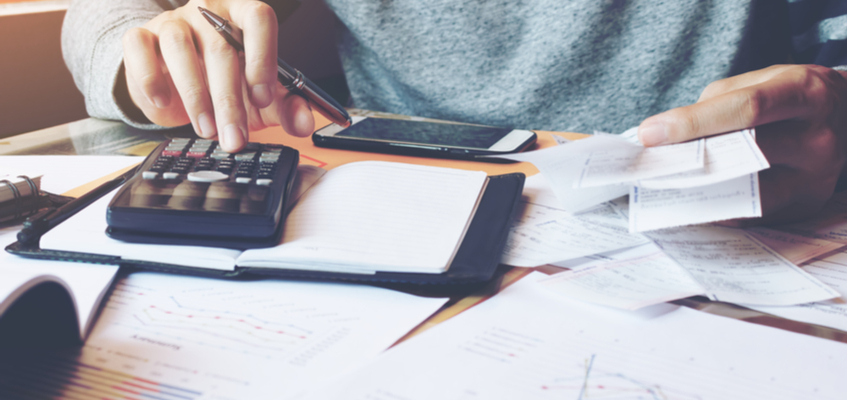
Understanding Your UK VAT Return
Editor’s note: This is a guest post from Claire Taylor, CEO of SimplyVAT.
VAT stands for Value Added Tax and is a transaction tax implemented.
VAT gets charged whenever value is added in the supply chain. For example – when goods are sold from a raw material supplier to the manufacturer – VAT is added to the sale price, again when the goods are sold from the manufacturer to the wholesaler, VAT is added. And from the wholesaler to the retailer VAT is added, and finally, the VAT is added again on the final part of the supply chain when the product is sold to the final consumer.


VAT is not supposed to be a burden to businesses, however, and if a business is VAT registered, any VAT paid on a purchase can be reclaimed via the VAT return. This is true of any import VAT paid.
When a VAT return is compiled in the UK, the tax authority wants to understand the transactions that have occurred in a given time period. In the UK, a company can register to file VAT returns either monthly, quarterly or annually. This is usually dependent on turnover. It is possible to file annually in the UK for a business that has a turnover of less than £1.35 million. If a business files annually, any import or purchase VAT can only be reclaimed once a year. It is important to understand how this will impact on your cash flow.
Learn how pay VAT from your Payoneer balance for free!
Filing a VAT Return
VAT returns contain boxes which require information. In the UK, there are 9 boxes that need to contain data. This number can differ depending on which EU country’s VAT return is being completed.
The Format of the UK VAT Return
Box 1
Box 1 contains the amount of VAT on all goods and services the seller supplied during the time period relating to the VAT Return due. This is known as ‘output VAT’.
Box 2
Box 2 contains the VAT paid by the seller on purchases from VAT registered suppliers in other EU member states. A seller may be entitled to reclaim the same amount as input VAT by placing the same figure in Box 4 of the UK VAT return. This happens when certain criteria is met due to an intra-community supply being made.
Box 3
Box 3 contains the amount of VAT due and it is Boxes 1 and 2 added together. This is referred to as ‘output VAT’ for the time period in question.
Box 4
Box 4 relates to the total amount of deductible VAT charged on your business purchases. This is called ‘input VAT’ and includes import VAT. Please note, input VAT can only be reclaimed if a valid VAT invoice is available and the purchase relates to the business and not personal use. In the case of the reclaim of import VAT, a valid C79 document has to be presented in case of an audit.
A C79 document is issued by HMRC (The UK Tax Authority) when the seller uses his VAT related EORI number on the UK import documents.
Box 5
Box 5 is a calculation of Box 3 and Box 4. The smaller amount should be deducted from the larger amount – the difference is to be entered into Box 5.
If the figure in Box 3 is more than the figure in Box 4, the difference is the amount you must pay. If the figure in box 3 is less than the figure in box 4, HMRC will owe you money. For overseas sellers, this is usually presented in a cheque format.
Box 6
Box 6 contains the total value of sales and all other outputs excluding any VAT. The total value of all business sales without VAT must be presented. All sales include any zero-rated VAT sales, exempt VAT supplies, supplies to other EU member states, distance sales, supplies outside the scope of UK VAT, etc. Please note, some of these will not be relevant for overseas sellers registered in the UK.
Box 7
Box 7 contains the total value of purchases excluding VAT. This can include imports and acquisitions from VAT registered suppliers in other EU countries.
Box 8
Box 8 contains the total value of all supplies of goods and related costs, excluding VAT to other EU countries. This can include distance sales to other EU countries where the seller holds a VAT registration in that country due to the distance sales being exceeded.
Box 9
Box 9 contains the total value of all acquisitions of goods and related costs excluding VAT from other EU countries.
Summary
The compilation of a VAT return can be complex when all the components have to be considered. It is very important to present the correct information. Comprehensive records also need to be kept – just in case the tax authority wishes to audit the data behind the figures presented in the boxes. If a mistake has been made, it is possible to rectify this in the next VAT return, or via a voluntary disclosure.
Frequently Asked Questions
A lot of sellers do not understand their obligations when selling within the European Union. It is always best to ask a certified tax agent if you have any questions about your VAT obligations and if and when you should be registered. We have gathered the most frequent questions asked to help demystify your obligations as a seller.
What are the consequences for not registering VAT?
Moving your stock into an EU country triggers an obligation to VAT register as your stock becomes a taxable supply. By failing to register for VAT, you are operating fraudulently, and the tax authorities will issue fines, penalties, and in some cases blacklist companies. Tax Authorities do share data between the different countries and they do conduct audits on companies. Now that Amazon and eBay have come under investigation, Tax Authorities are becoming much more strict about ensuring the sellers that operate on them are compliant.
After VAT registration in the UK, what are the consequences for not paying tax?
Once you are VAT registered, you must file VAT returns declaring all sales you have had within the period as well as pay the tax due. By not paying or filing the VAT returns, HMRC will conduct an audit of a company. The longer the amount of VAT owed remains outstanding, the higher the penalties.
If we register in Germany now, do we need backdating?
Yes. The German tax authorities are very strict and are cracking down on Chinese sellers to avoid lost tax revenue. If you are applying for a German VAT number, they want to know all of the Amazon accounts a company may have and may require access to these accounts or reports. You will have to prove that you were not holding stock in Germany prior to the VAT registration date you requested and will be required to backdate to the point when the VAT registration obligation was triggered. The German Tax Authority has implemented a new process whereby you must account for all of the backdated VAT owed before a VAT registration will be issued.
Tax authorities and sales platforms did not require us to do the registration, can we wait until they request us to do so?
It is best to register right away when you either hold stock within an EU country or surpass the distance selling threshold within a calendar year. By delaying registration, you will only be facing late penalties and fines for the backdated VAT owed.
What are the effects of not filing returns honestly?
It is fraudulent to not pay the correct amount of VAT owed and evading the total amount due. By selling within a country, you should adhere to the rules of the relevant country. The tax authorities have the power to issue penalties and interest charges for no or late compliance. They can close your online shops, seize stock and stop you paying in the future.
In the event that we deliver the products directly to our customers from China, do we still need to pay taxes?
This is dependent on who the importer of record is. If the customer is the importer of record and will pay for the import VAT, then you as a seller has no obligation to VAT register. If you as the seller are the importer of record and pay for the import VAT, you should be VAT registered in the country where you are importing into and you can reclaim the import VAT paid on your VAT return.
Can we use other Company’s VAT number?
No. This is illegal and considered fraudulent behaviour. Each company must have their own VAT number.
Do we need to backdate to the first day of sale?
No. This depends on a variety of possibilities.
- If you have been holding stock in an EU country, you must backdate your registration to the time you first imported your goods into the country.
- If you have surpassed the distance selling thresholds (selling from a fulfillment centre in one EU country where you are registered to another EU country where the customer is) within a calendar year the EU, you will be required to be VAT registered.
- If you have been delivering goods from China directly to customers and the customer has been the importer on record, then you will only need to register when the previous two steps occur.If you are unsure of what your obligations may be when beginning the registration, you can ask for a free tax advice where we will be able to look at sales data to understand when your VAT registration date should start.
Don’t let VAT rules curtail your ambition for global dominance! At www.simplyvat.com we understand the complexities of international VAT. And we’re here to help.
- We provide an expert, friendly and customer focused service
- We can ensure you are VAT compliant across Europe and elsewhere where local laws are applicable such as Canada
- We can give you the right country-specific VAT compliance information to make sure your invoices are correct
- We can make your VAT compliance experience as painless as possible through our new online VAT compliance platform
- We can get you VAT registered, obtain an EORI number for you; prepare and submit your VAT return, and, if necessary, file your EC Sales Lists and Intrastat declarations on time
- We monitor your distance sales from your multichannel locations to ensure you stay compliant
Any questions? Why not get in touch or book a call to discuss UK and EU VAT. Our friendly team are always here to have a chat and give you some advice.


Claire Taylor is the CEO of SimplyVAT.
SimplyVAT is a tax agency helping e-commerce sellers register and comply with international tax regulations. If you need further information, please don’t hesitate to contact our team – heretohelp@simplyvat.com or call +44 1273 634594 for our UK office.




